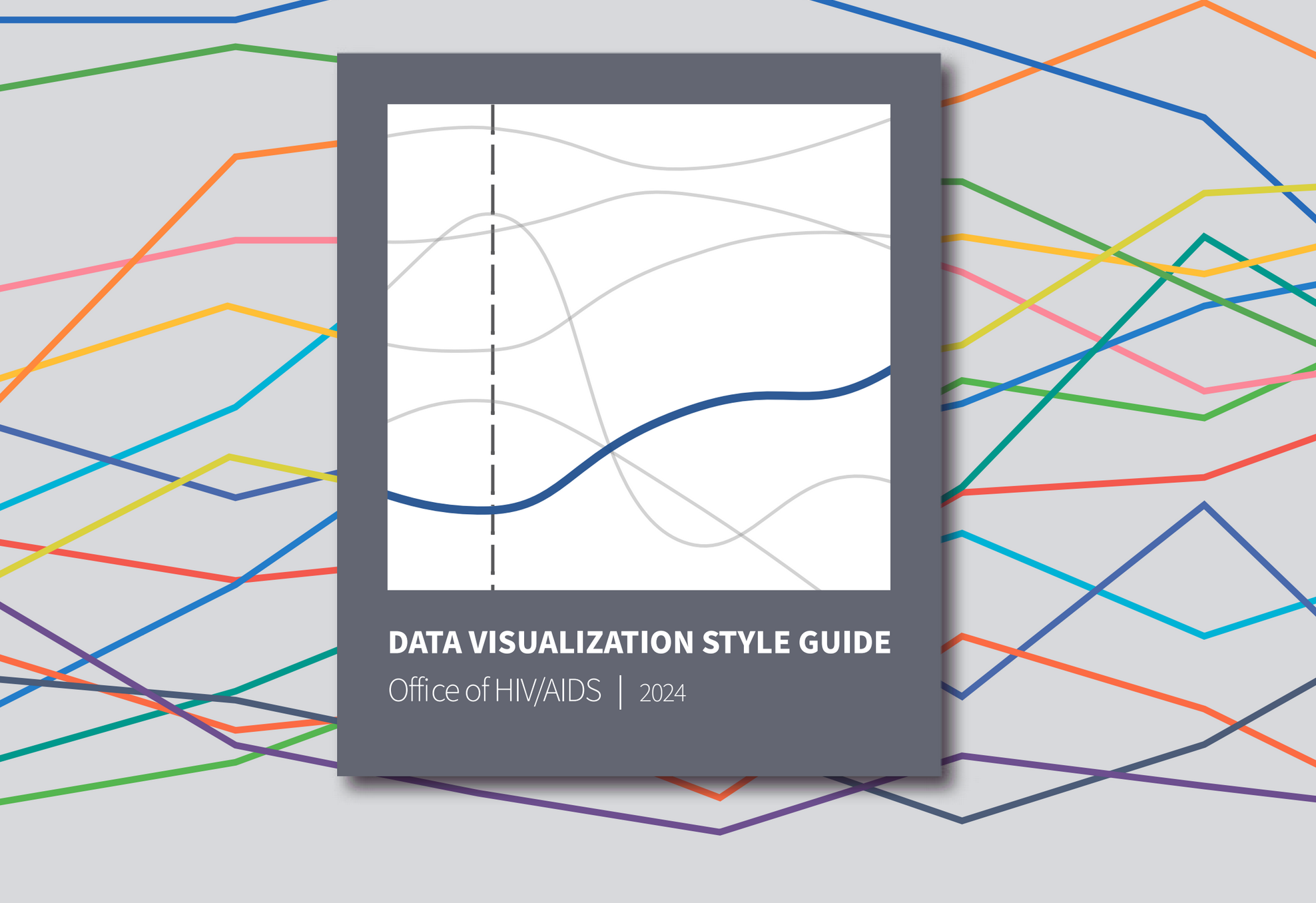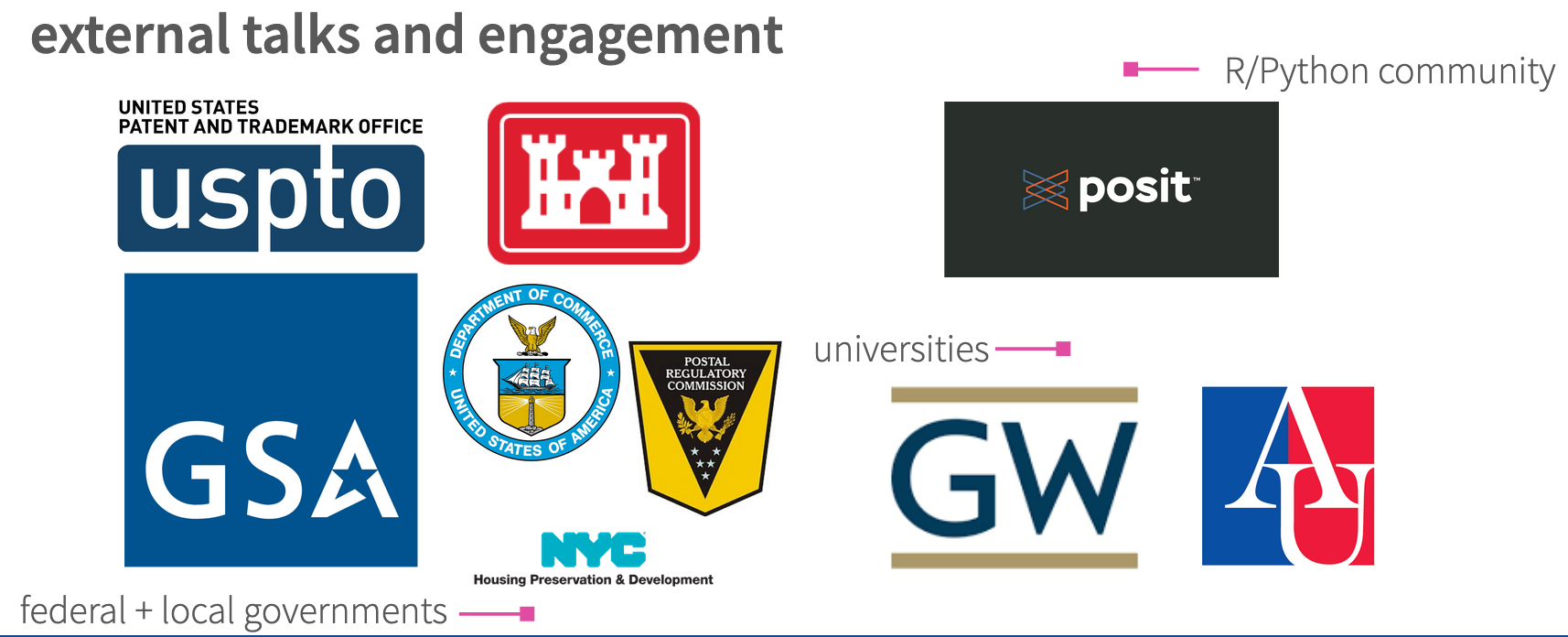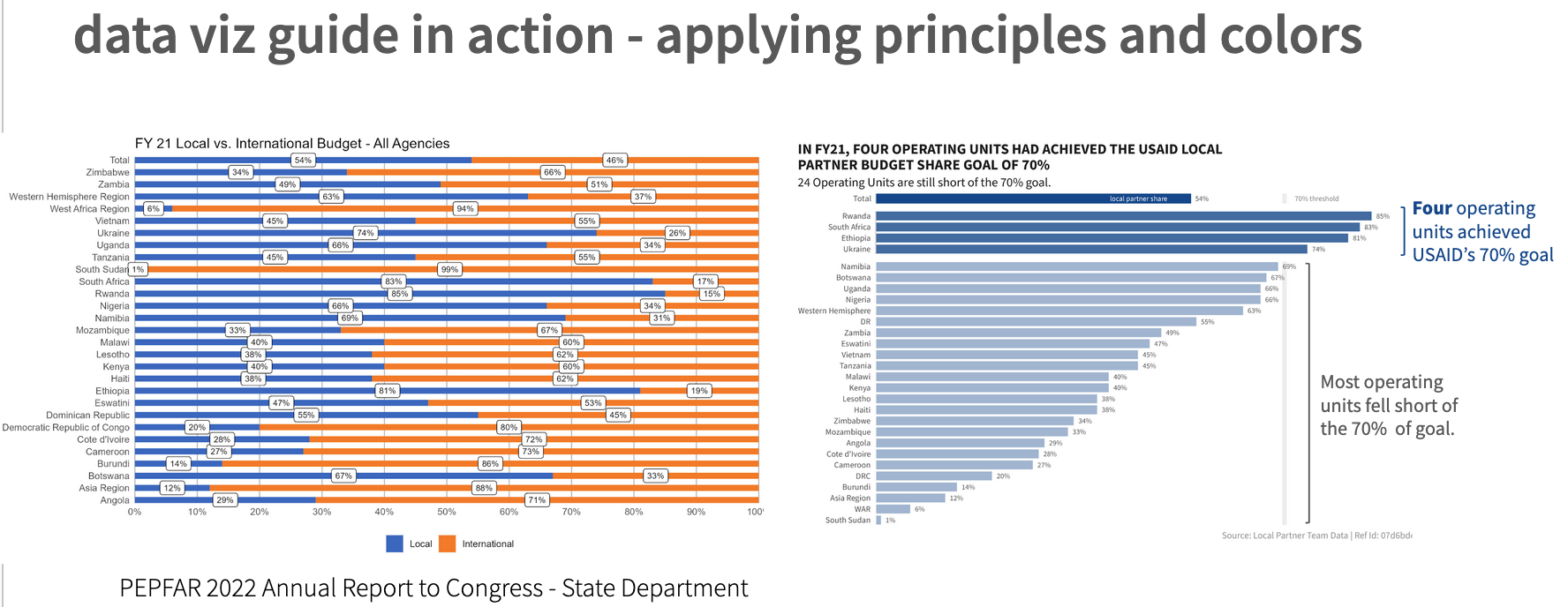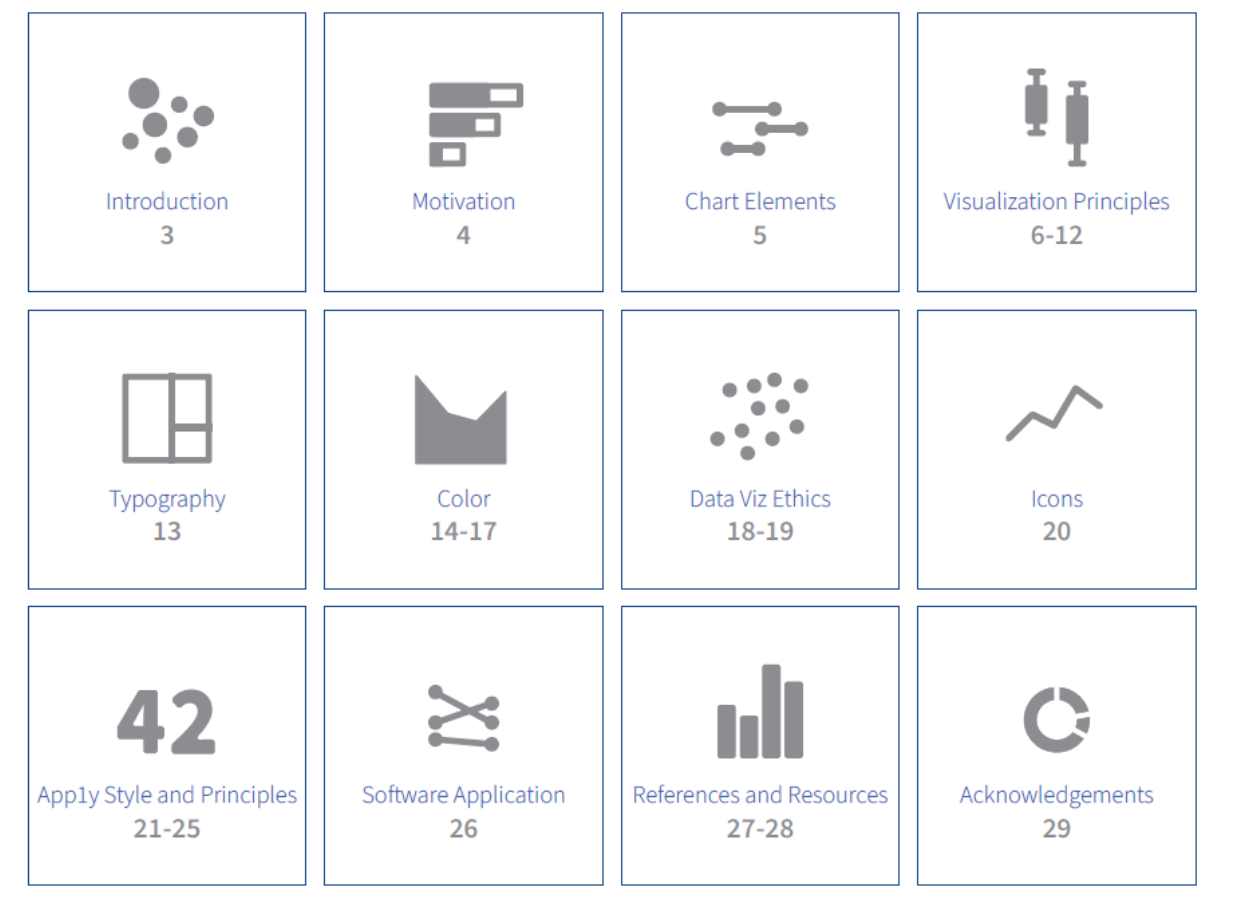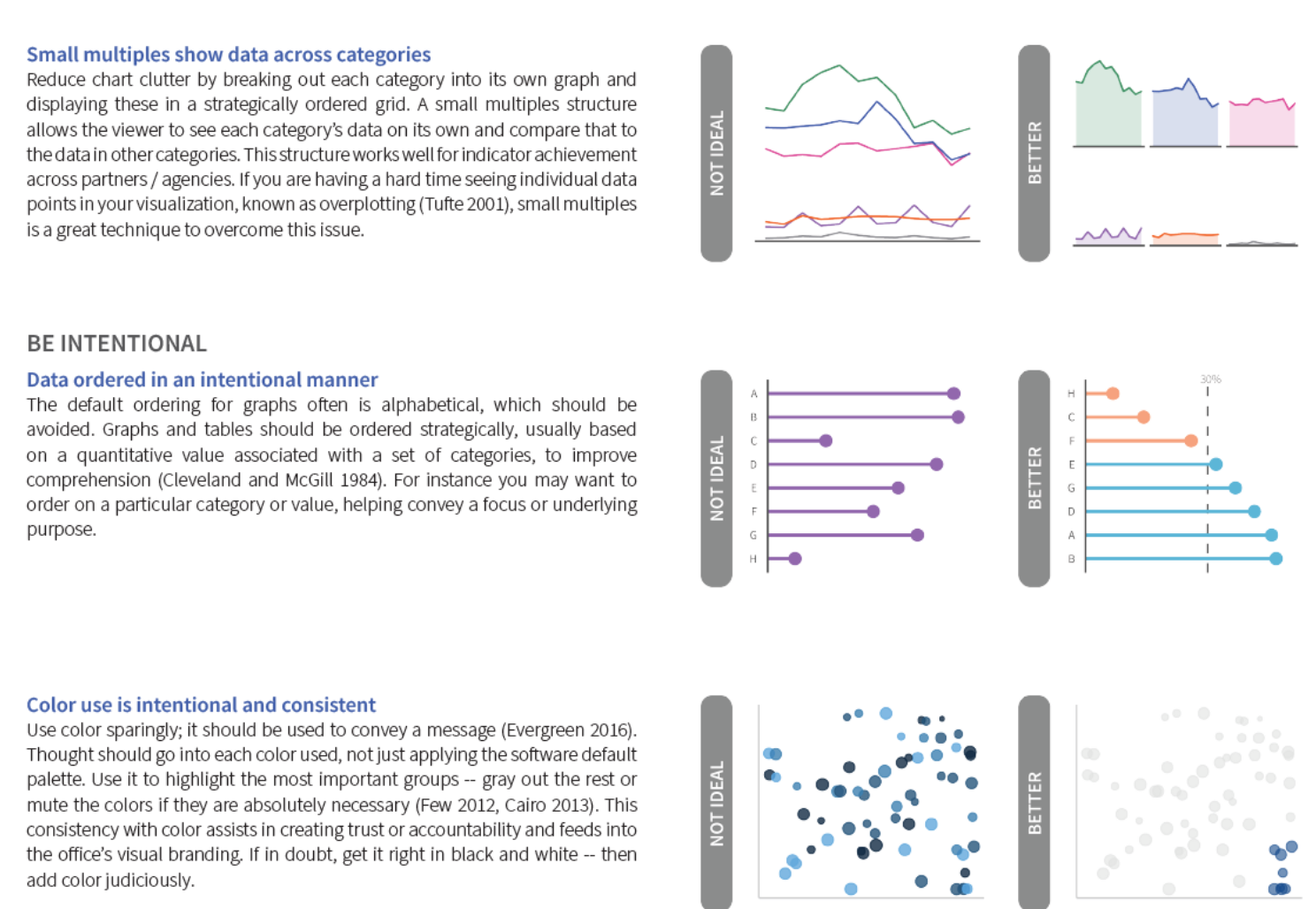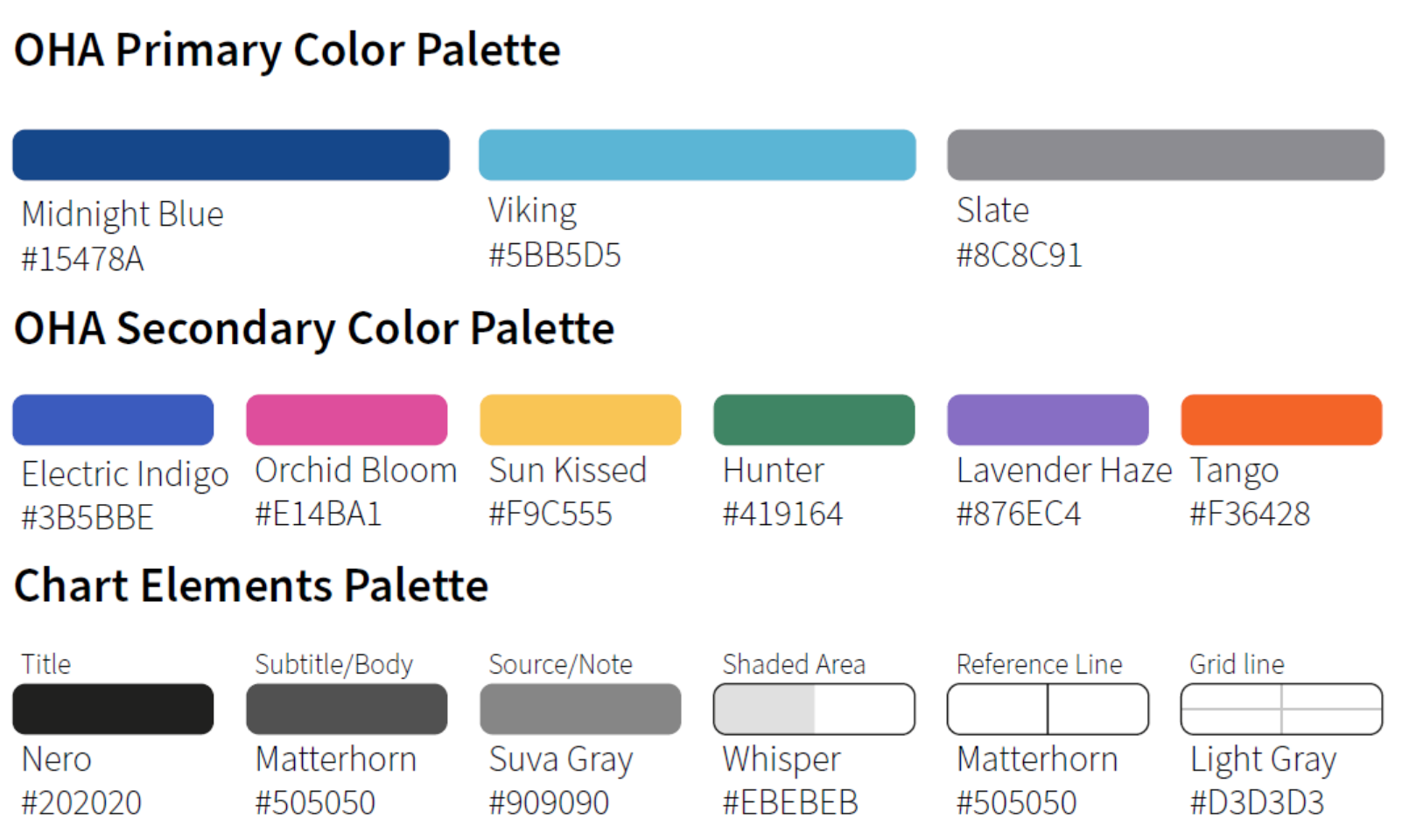OHA Data Viz Guide
Project Purpose
Provide the USAID Office of HIV/AIDS (OHA) with a set of guide rails on how to present data in-line with an overall vision so that visualizations have a common look and feel. OHA-produced visualizations do not need to all be identical, but they should appear as if they belong to the same family. This common appearance is achieved through the use of a set of elements belonging to an organization’s graphical style. For example, by using the same typeface, size, color schemes, graphical elements, annotation patterns, and placement options, different users can create graphics grounded in a base style, while still allowing for creative flexibility.
Overview
The motivation for creating the data visualization guide came from an assessment of one of our office’s data review presentations, which documented that over 100 different colors were used for encoding data or annotations in visualizations contained in the review. The result not only is a set of graphics that lack a standard look and forces a user to reorient themselves each time, but also a brand that is unmemorable, unrecognizable and, potentially, not as trusted as a more polished product would be. This style guide serves as a tool to define and enhance brand cohesion. It is designed to save OHA colleagues time in the long run by reducing the number of decisions you make about chart size, graphical elements, which font, font sizes, etc.
Outcomes
- Provide a common set of core data viz principles to guide the branch and office’s products
- Established a set of colors, typography, and standard plot elements to use
- Allow users to spend more time on graphic content and messaging
- Created a common look and feel for OHA data products
- Work presented at various forums outside of USAID creating collaboration opporuntities with universities, other USG agencies, and local governments
Lessons Learned
- Survey and establish a baseline to understand the existing conditions
- Develop a visualization package, glitr, in R build upon ggplot2
- How to work with a variety of stakeholders to create buyin a various levels
